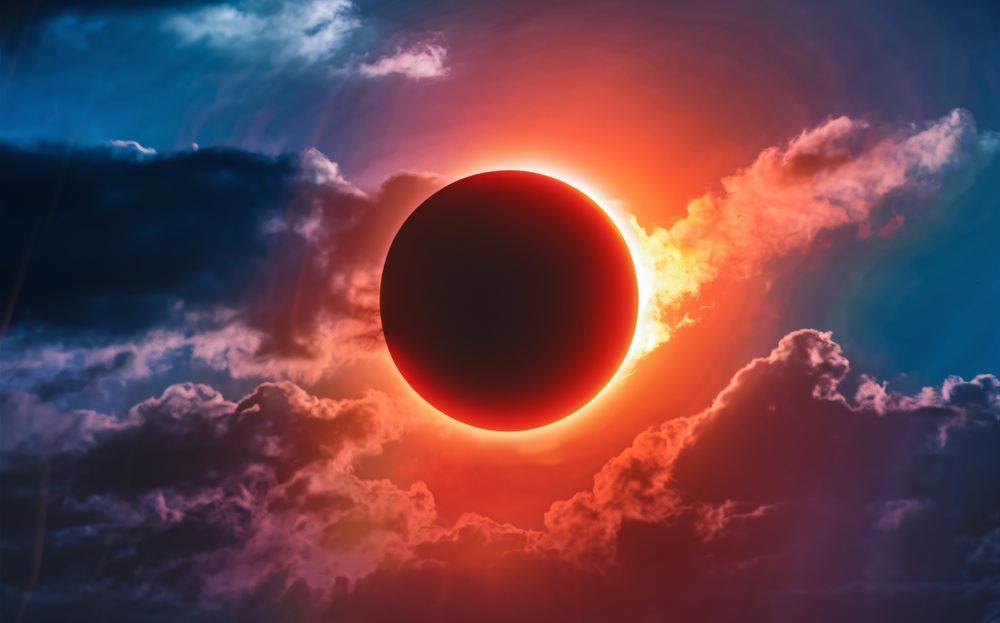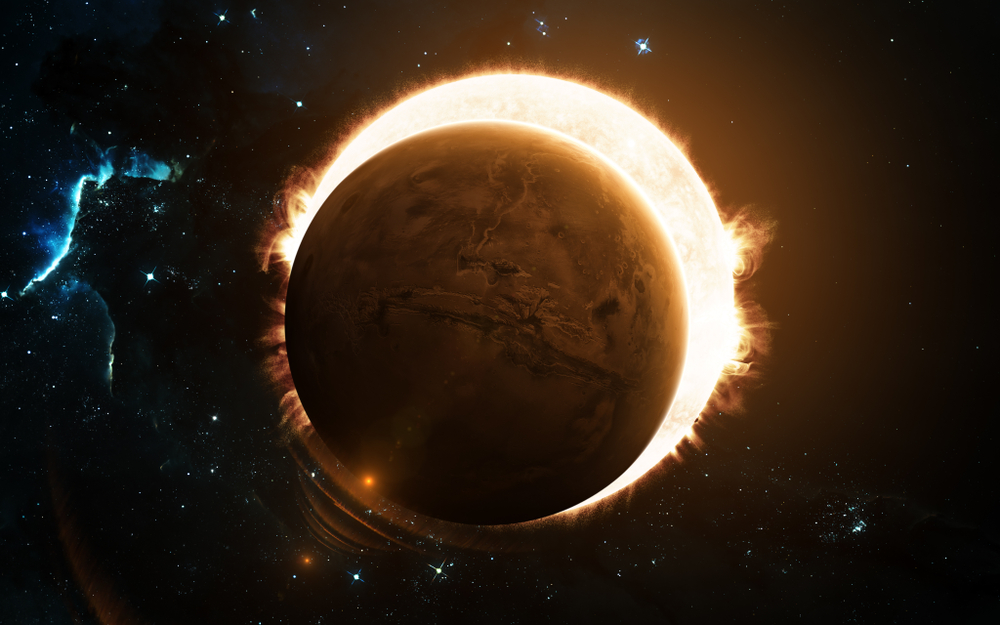Your cart is currently empty!
Six Minutes of Darkness Earth to Witness Longest Solar Eclipse in 100 Years

Every so often, the internet lights up with claims that stretch the truth just enough to capture mass attention. The latest of these insists that the entire Earth will soon be cloaked in darkness for six full minutes, a phenomenon supposedly not to be repeated for a hundred years. The idea is striking, but it is also misleading. There will be no global blackout. Yet behind the exaggeration lies a kernel of truth: in August 2027, a solar eclipse unlike any other in our lifetimes will unfold, casting shadows across continents and giving rise to the longest period of totality on land in the 21st century.
Far from a doomsday scenario, this event is a rare alignment of celestial mechanics, the kind of natural spectacle that has awed humans for millennia. While the rest of the world will carry on in daylight, a narrow band stretching across parts of Europe, Africa, and the Middle East will plunge into a surreal dusk. For up to six minutes and 22 seconds, the sun will vanish behind the moon, revealing the solar corona and creating an experience so powerful that astronomers already call it the “eclipse of the century.”

Sorting Fact from Viral Fiction
In recent months, a claim has been spreading quickly across social media platforms and online forums, declaring that the Earth will soon be plunged into six minutes of total darkness on August 2. The posts go further, suggesting this event will not happen again for another hundred years, painting it as a once-in-a-lifetime cosmic blackout. It is easy to see why such a dramatic statement captures attention, but it is built on a misunderstanding of astronomy. The truth is that there will be no global blackout. The Earth is far too large and sunlight far too constant for the entire planet to be wrapped in shadow at the same time. What people are actually latching onto is an upcoming celestial phenomenon, one that is extraordinary but very different from the viral myth.
On August 2, 2027, the world will witness a total solar eclipse that astronomers have already christened the “eclipse of the century.” During this rare alignment, the moon will pass directly in front of the sun as seen from Earth, blocking its light and casting a shadow across parts of the planet. For those positioned in the eclipse’s path, the skies will darken to an eerie twilight in the middle of the day. The remarkable detail about this particular event is its duration. In certain locations, the total eclipse will last up to six minutes and 22 seconds, making it the longest period of totality to occur on land in the 21st century. By comparison, the much-celebrated April 8, 2024, eclipse that crossed Mexico, the United States, and Canada reached a maximum of four minutes and 28 seconds — already considered unusually long. To eclipse-watchers and astronomers, an extra two minutes is nothing short of extraordinary.
This record-setting eclipse underscores why the viral claim has been able to spread so quickly. While it is false to say that the entire Earth will simultaneously go dark, it is true that a powerful astronomical event is on the horizon — one that will not be surpassed until July 16, 2114. The distinction between myth and fact is crucial here: August 2, 2027, will not bring global darkness, but for those in the right place at the right time, the experience will feel unlike anything else in nature. Standing within the moon’s shadow as daylight gives way to an otherworldly dusk has been described across history as both unsettling and sublime. This rare six minutes of darkness, confined to a specific stretch of the globe, is set to remind humanity once again of the vast scale and mystery of the cosmos.

Where the Shadow Will Fall
The path of totality on August 2, 2027, will stretch across an enormous swath of Earth, though it will remain relatively narrow in the grand scale of the planet. The eclipse’s shadow will trace a band about 160 miles wide as it crosses more than 9,400 miles of the Earth’s surface, sweeping across 11 countries in total. This includes parts of southern Spain and Gibraltar before passing over North Africa and into the Middle East. People in Morocco, Algeria, Tunisia, Libya, Egypt, Sudan, Saudi Arabia, Yemen, and Somalia will also find themselves in the shadow of the moon. In each of these regions, the experience will vary slightly, but those within the central line of the path will witness the full 6 minutes and 22 seconds of totality, the longest possible duration.
The sheer scale of this eclipse means that millions of people will have a chance to see it firsthand if weather permits. While the totality zone is relatively narrow, the partial eclipse will be visible across a much broader region, spanning most of Africa, Europe, and southern Asia. Even those who are not in the direct path will be able to observe the moon partially covering the sun, creating a noticeable dimming of daylight. However, the most powerful and transformative experience comes only from standing directly in the moon’s shadow. That is why travelers, scientists, and eclipse enthusiasts are already making plans to be in some of the most iconic viewing locations, from the ancient temples of Luxor in Egypt to the beaches of Tunisia.
The cultural and geographical diversity of the regions touched by this eclipse only adds to its uniqueness. In places like Spain, the eclipse will begin with a Mediterranean backdrop, while in North Africa, it will pass over landscapes steeped in both natural beauty and human history. In Sudan and Yemen, it will unfold against desert horizons. Each vantage point will offer its own flavor of awe, and together they form a reminder that celestial events are shared experiences that cross borders, religions, and languages. Despite differences in culture and history, the act of watching the sky darken in midday connects communities across continents in a moment of collective wonder.

Why This Eclipse is Unusually Long
Not all eclipses are created equal, and the extraordinary length of the 2027 event is no accident. The duration of a total solar eclipse depends on several factors, including the distance between the Earth and the moon at the time of alignment. The moon follows an elliptical orbit around Earth, which means sometimes it is closer and sometimes farther away. On August 2, 2027, the moon will be near its closest point to Earth, making its apparent size in the sky slightly larger. This larger disk will not only cover the sun more completely but will also allow the eclipse to last longer for those within the path of totality.
Another factor contributing to the extended totality is the positioning of the Earth in its orbit around the sun. The eclipse will occur when Earth is near its farthest point from the sun, a position known as aphelion. From this vantage, the sun appears marginally smaller in the sky, which further increases the moon’s relative ability to block it for a longer duration. The combination of a closer moon and a smaller sun creates the perfect conditions for the longest solar eclipse of the century. These alignments are rare, and when they occur together, they produce moments of extended darkness that eclipse enthusiasts treasure as rare jewels of celestial mechanics.
To put the significance of this length into perspective, most total eclipses last just two or three minutes, and even eclipses approaching four minutes are considered unusually long. Extending past six minutes is a once-in-many-lifetimes occurrence. The previous record-holding eclipse of modern times happened in 1991, when observers in Mexico and Hawaii witnessed 6 minutes and 53 seconds of totality. After the 2027 event, humanity will have to wait until July 16, 2114, for another eclipse of comparable duration. In this way, the event of 2027 is not only rare but historically significant, a benchmark against which future eclipses will be measured.

The Human Experience of Darkness in Daylight
Science explains the mechanics of an eclipse, but numbers and measurements alone cannot fully capture what it feels like to stand under a midday sky as it suddenly turns to twilight. For many, witnessing a total eclipse is a profoundly moving experience. The air cools, animals behave as though night is falling, and the world seems to pause as the sun vanishes behind the moon. The moment of totality reveals the solar corona, the sun’s outer atmosphere, streaming outward in delicate, ghostly tendrils that are normally invisible to the human eye. This sudden glimpse into a hidden part of the universe is often described as both humbling and transformative.
Anthropologists and historians remind us that eclipses have carried enormous symbolic weight throughout human history. Ancient civilizations saw them as omens or divine messages. The Babylonians and Chinese recorded them meticulously, often tying them to rulers’ fates or warnings from the heavens. In Egypt, where the 2027 eclipse will pass directly over some of the most important archaeological sites, the juxtaposition of modern scientific understanding and ancient myth will be particularly poignant. The same sky that once inspired fear will inspire awe of a different kind, rooted in knowledge and curiosity.
In the modern era, eclipses have become unifying spectacles. During the April 2024 eclipse across North America, millions of people gathered in parks, stadiums, and fields to witness the moment together. Families, scientists, and strangers alike looked skyward, many describing the experience as deeply emotional. The 2027 eclipse, with its unprecedented duration, is expected to draw even larger gatherings across multiple continents. In a time when much of the world is divided by politics and conflict, the shared silence under a darkened sky offers a fleeting but powerful reminder of our shared existence on this small, fragile planet.

Preparing for the Eclipse of the Century
With just a few years until August 2027, preparations are already underway among scientists, travelers, and governments. Astronomers see it as a once-in-a-lifetime opportunity to study the sun’s corona in detail, gathering data that can only be captured during the brief minutes of totality. Researchers will set up observation stations across the eclipse path to study solar winds, magnetic fields, and the behavior of plasma around the sun — phenomena that remain among the great mysteries of astrophysics. For the scientific community, this eclipse represents a natural laboratory unlike any other.
For travelers and enthusiasts, the 2027 eclipse is an event worth planning well in advance. Popular viewing sites, particularly those in Egypt near Luxor and along the Nile, are expected to attract large numbers of international visitors. Tourism boards and local governments in North Africa and the Middle East are already considering how to manage the influx of people, balancing the economic opportunity with the need to preserve cultural sites and maintain safety. As with past eclipses, weather will play a decisive role, and careful planning about where to be on the day will make all the difference.
Perhaps most importantly, this event is a call to pause and look upward. In an era where daily life is consumed by screens, deadlines, and the pace of modern society, the eclipse invites people to reconnect with the rhythms of the cosmos. It is a chance to be reminded of the forces that shape our world beyond human control, forces that unfold on scales of time and space far larger than our own. Whether approached from the lens of science, history, or spirituality, the eclipse of August 2, 2027, is an invitation to marvel at the rare gift of being alive in the right place at the right time.
